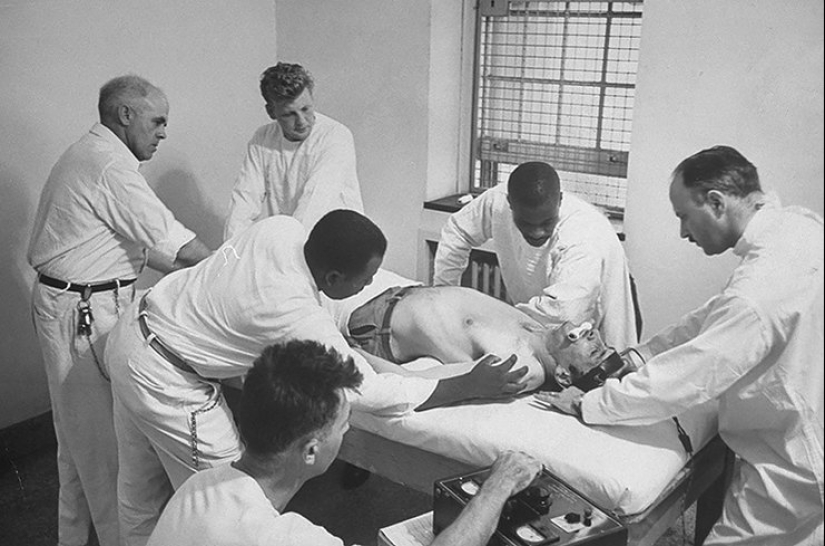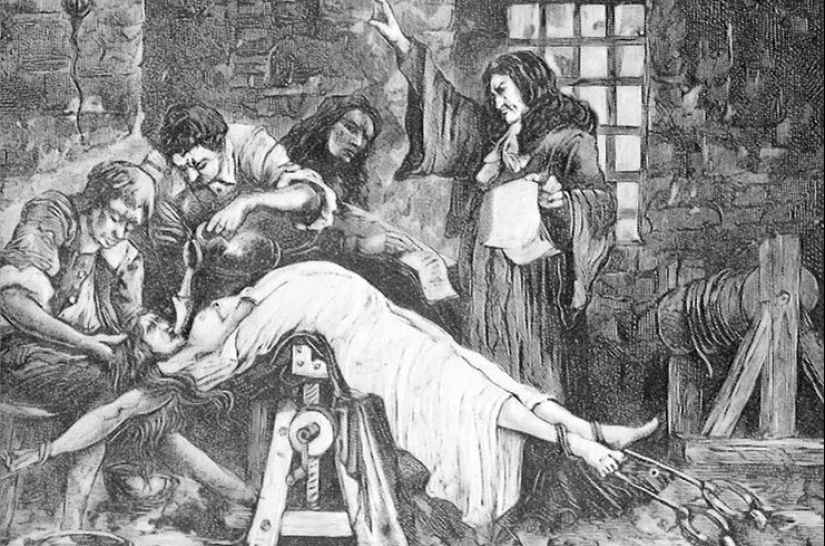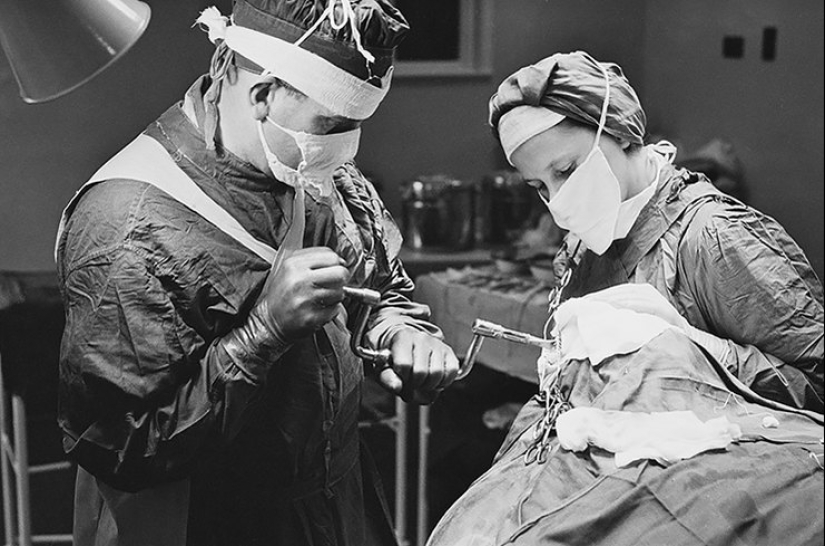Torture and other terrible methods of treating mental disorders
Categories: Health and Medicine | History | Society
By Pictolic https://pictolic.com/article/torture-and-other-terrible-methods-of-treating-mental-disorders.htmlUntil the end of the XVIII century, people with mental illnesses were considered not sick, but possessed by the devil, or witches and sorcerers, and therefore they were exorcised or executed. In 1793, the French psychiatrist Philippe Pinel called for people with mental disorders to be considered "not guilty, but sick", and they began to be treated. Methods that were more like torture.
Electric shock

One of the most famous and most frightening methods of treatment is electroconvulsive therapy or electroshock. It was first tested on patients in 1934, and in the following decades the popularity of the method gained momentum.
Hungarian doctor Ladislo Meduna noticed that patients suffering from schizophrenia get better after a convulsive seizure: patients got rid of hallucinations, delirium and incoherent speech. Meduna suggested that the same seizure, only artificially induced, could help to overcome the disease, and began using the drug cardiosol in therapy, which caused a seizure just a few seconds after taking it. The patients ' condition improved just before their eyes, and although the symptoms returned later, the doctors believed that it was a matter of the duration of therapy.
After learning about the revolutionary discovery, Ugo Cerletti, dean of the Faculty of Mental and Nervous Diseases of the University of Rome, decided that he knew a better way: he had used electric shocks for many years in experiments on animals and decided that it would be more effective to cause seizures in patients in this way. So EST appeared.
"Electroshock treatment" in those years could also be forced, in addition, neither anesthesia nor drugs that relax muscles were used. Therefore, the patient's body arched, the air left the lungs, the limbs moved chaotically, the body involuntarily got rid of urine, feces and seminal fluid. Moreover, microcracks appeared in the bones. In addition, almost all patients lost their memory. As a rule, it was restored within a few days, but in some it never recovered.
At the same time, ECT was tried to be used for the treatment of absolutely all mental diseases and disorders, so almost no patient in the middle of the last century escaped several sessions of "electric shock"
The writer Ernest Hemingway also went through 13 sessions. His memory never fully recovered, and shortly before he committed suicide, he said:
Hydrotherapy

Today, the concept of "hydrotherapy" seems to be a slightly outdated analogue of the usual concept of "spa procedures". But for people with mental illnesses who were treated in this way, the word "hydrotherapy" became synonymous with the word "torture".
Initially, the procedure consisted of immersing the patient in a bath to help him relax. However, the procedure lasted about a day. But then they decided to improve it.
At first, patients were suddenly immersed in icy water to cause a strong shock to the whole body, followed by fatigue. At the same time, they also sought to intimidate. Then — to "warm up" until the first signs of suffocation: it was believed that the panic fear that the patient is experiencing at this moment is an indispensable assistant in the fight against delirium.
Other methods of hydrotherapy were completely based on the ancient Asian torture: the patient was placed in a bath and slowly poured several dozen buckets of ice water on his head or poured water in a thin stream on the back of his head from a great height. At the same time, the prototype of the Charcot shower was born: patients were literally "shot" from a fire hose.
At the same time, hydrotherapy did not have any therapeutic effect on patients. Only for doctors and orderlies: patients were so afraid of "treatment" that those whose illness allowed them to control their behavior behaved as the staff demanded. Just not to be "treated".
Lobotomy

In 1935, Dr. Egash Monish hypothesized that the intersection of fibers in the frontal lobe could be effective in the treatment of mental disorders. The first operation was performed in 1936 and was called "leucotomy": during this intervention, the frontal lobes of the brain were not damaged, but only the white matter of the neuronal connections connecting the frontal parts with other parts of the brain was cut through. After performing about a hundred operations, Monish began to popularize his method, although he actually monitored only 20 patients.
In 1949, Monish received the Nobel Prize for his discovery: during the Second World War, many soldiers suffering from post-traumatic disorder returned from the front, and lobotomy began to be used as a quick, cheap and effective means to "calm" patients.
A little earlier, the method of transorbital leukotomy ("lobotomy with an ice axe") was invented, in which the narrowed end of a surgical instrument resembling an ice pick was aimed at the bone of the eye socket, a thin layer of bone was pierced with a surgical hammer and the instrument was inserted into the brain. The first operations were carried out with the help of a real ice pick. In fact, the entire operation was carried out blindly.
Studies of the effectiveness of lobotomy were conducted with violations of the methodology, and the main criterion for recovery was considered to be the patient's condition, in which it was possible to easily manage it. And only later, already in the fifties, the consequences of lobotomy were carefully studied.
It turned out that the operation actually turned a person into a "vegetable": it caused seizures, loss of motor coordination, partial paralysis and urinary incontinence. Patients showed significant intellectual impairment, lost control of their behavior, became emotionally unstable and lost the ability to purposeful activity, critical thinking and work — with the exception of the most primitive work. In fact, they turned into zombies — a walking human shell.
Keywords: Diseases | Health | Psychiatry | Mental disorders
Post News ArticleRecent articles

Spanish artist Soledad Fernández is the author of wonderful portraits imbued with peace and sensuality. Her realistic paintings ...

These unusual stones can be found in Romania, and more specifically, in the Central and southern parts of the country. People call ...
Related articles

A girl named Jean more than once delighted users of Peekaboo with its fascinating stories about life in South Korea. This time she ...

It is no secret that all things in nature are subject to cyclic changes that are associated with the seasons. The human body is no ...

Since 1970‑ies in the neighboring cities of Rostov-on-don, Shakhty and Taganrog was sent to jail 37 serial killers, who killed ...

It is difficult to surprise us with female bodybuilders. Some of them are so carried away by steroids that they have become not ...